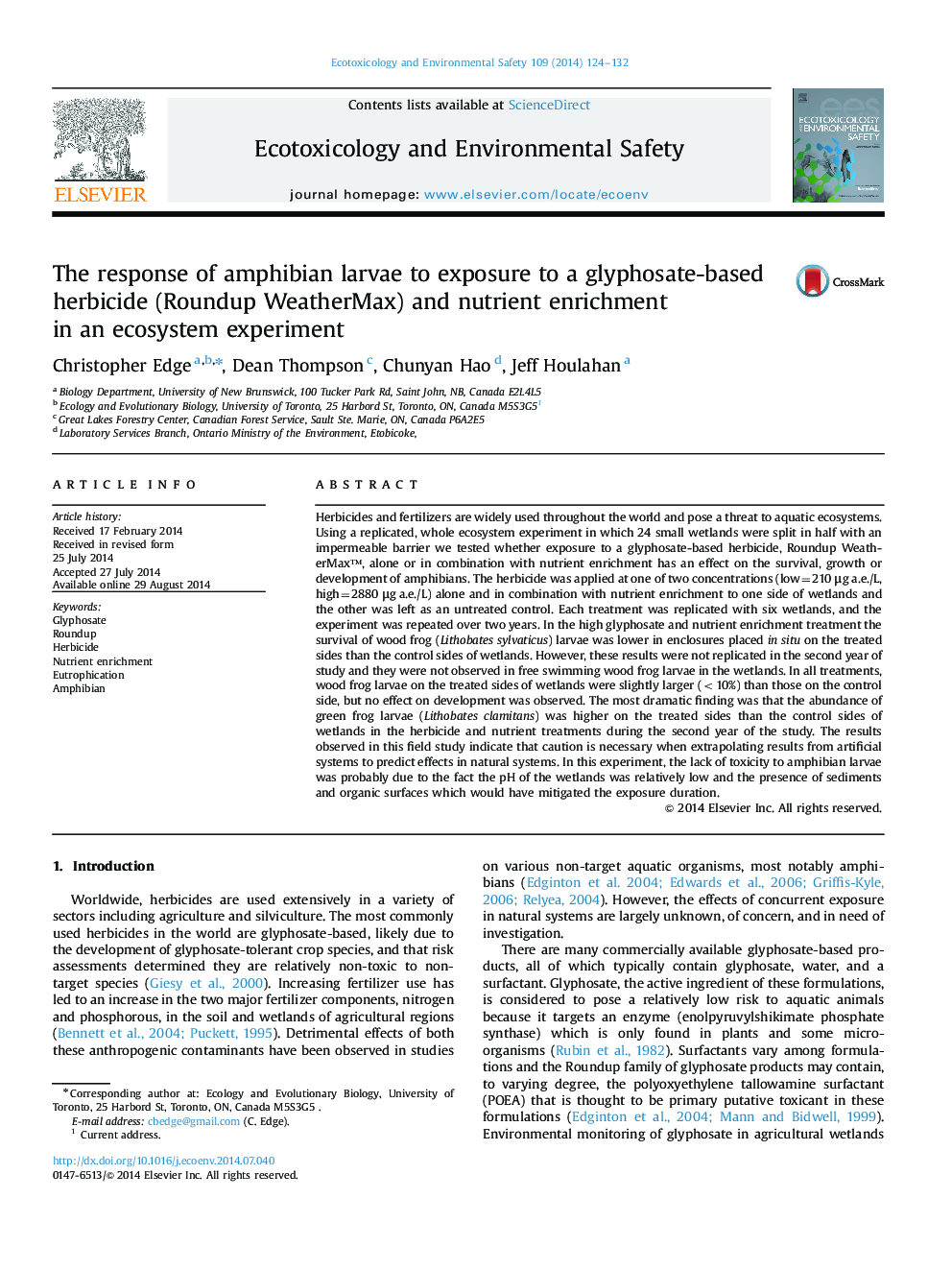| کد مقاله | کد نشریه | سال انتشار | مقاله انگلیسی | نسخه تمام متن |
|---|---|---|---|---|
| 4419993 | 1618954 | 2014 | 9 صفحه PDF | دانلود رایگان |

• Herbicide exposure or nutrient enrichment had limited direct effects on the amphibian larvae.
• Environmental factors, low pH and presence of sediment, mitigate toxicity in the natural wetlands.
• Indirect effects caused by changes to the ecosystem structure are more likely than direct effects.
• Prior laboratory and mesocosm studies did not accurately reflect risk in natural systems.
Herbicides and fertilizers are widely used throughout the world and pose a threat to aquatic ecosystems. Using a replicated, whole ecosystem experiment in which 24 small wetlands were split in half with an impermeable barrier we tested whether exposure to a glyphosate-based herbicide, Roundup WeatherMax™, alone or in combination with nutrient enrichment has an effect on the survival, growth or development of amphibians. The herbicide was applied at one of two concentrations (low=210 μg a.e./L, high=2880 μg a.e./L) alone and in combination with nutrient enrichment to one side of wetlands and the other was left as an untreated control. Each treatment was replicated with six wetlands, and the experiment was repeated over two years. In the high glyphosate and nutrient enrichment treatment the survival of wood frog (Lithobates sylvaticus) larvae was lower in enclosures placed in situ on the treated sides than the control sides of wetlands. However, these results were not replicated in the second year of study and they were not observed in free swimming wood frog larvae in the wetlands. In all treatments, wood frog larvae on the treated sides of wetlands were slightly larger (<10%) than those on the control side, but no effect on development was observed. The most dramatic finding was that the abundance of green frog larvae (Lithobates clamitans) was higher on the treated sides than the control sides of wetlands in the herbicide and nutrient treatments during the second year of the study. The results observed in this field study indicate that caution is necessary when extrapolating results from artificial systems to predict effects in natural systems. In this experiment, the lack of toxicity to amphibian larvae was probably due to the fact the pH of the wetlands was relatively low and the presence of sediments and organic surfaces which would have mitigated the exposure duration.
Journal: Ecotoxicology and Environmental Safety - Volume 109, November 2014, Pages 124–132